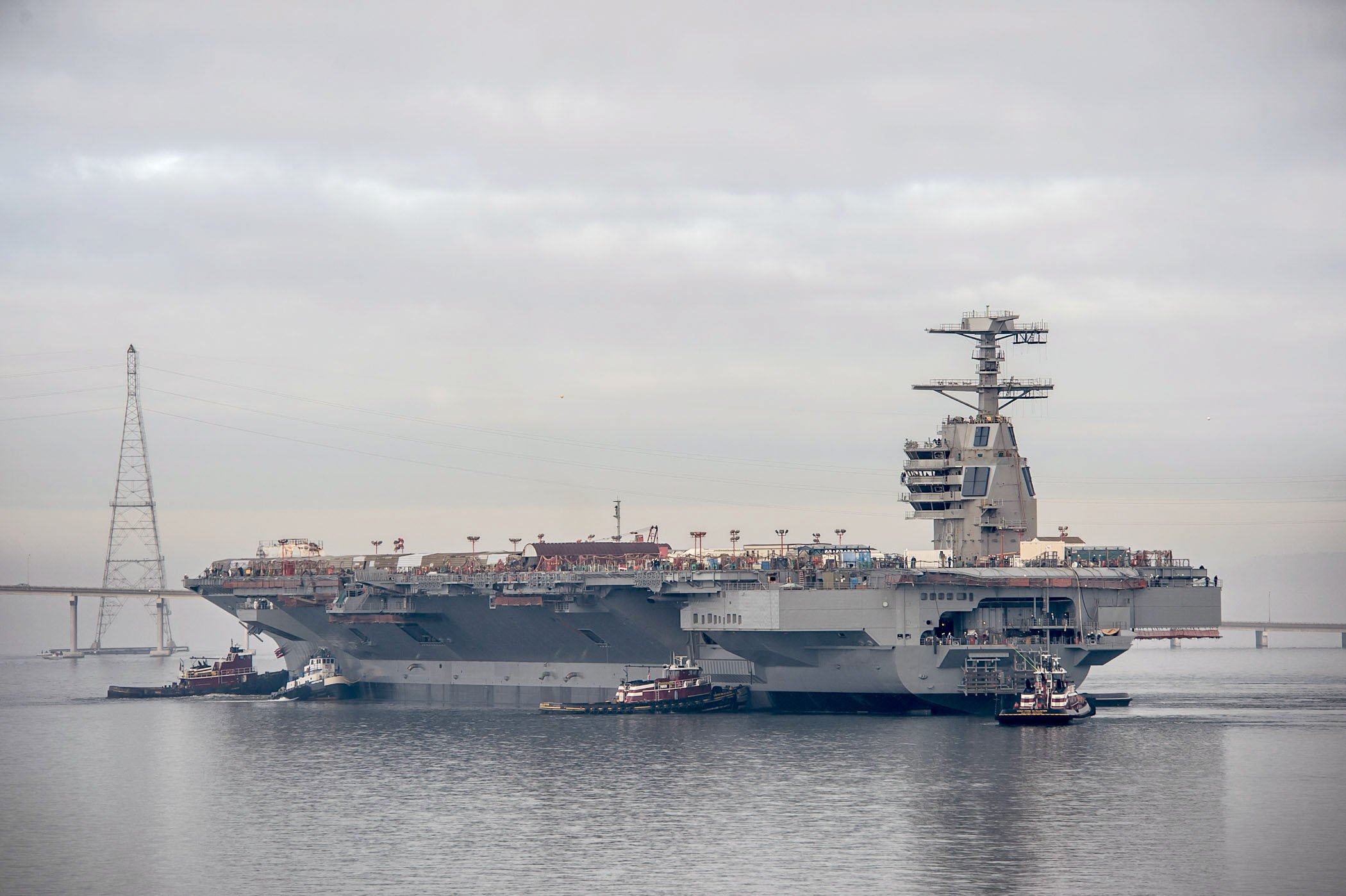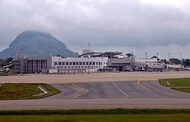The US Navy is less than a year away from adding the most expensive warship in history to its fleet, the $13 billion USS Gerald Ford.
The USS Ford, the lead ship of the new Ford-class aircraft carrier series, is expected to join the US Navy by February 2016, according to CNN. Once deployed, the ship will be the largest carrier ever to ply the seas and will feature a number of changes and advancements over the US’ current Nimitz-class aircraft carrier.
Here’s a look at this multi billion-dollar beast:
The USS Gerald Ford is expected to cost upwards of $13 billion by the time it is deployed.
(Screengrab/Youtube) The USS Gerald R. Ford.
The Ford, and the accompanying Ford-class carrier fleet, are intended to relieve stress and over-deployment within the US Navy. Currently, the Navy operates 10 carriers but wants an additional vessel to take pressure off of the rest of the fleet.
(U.S. Navy/Huntington Ingalls Industries/Chris Oxley)
The ship will feature a host of changes over the current Nimitz-class carrier. Ford-class carriers will be capable of generating three times more electrical power than the older carrier classes, for example.
(US Navy/Newport News Shipbuilding) A 3d model of the USS John F. Kennedy, the second ship the Ford-class carrier series.
This increased electrical power supply allows the Ford to use the newly designed Electro-Magnetic Aircraft Launch System (EMALS), which will allow the vessel to launch 25% more aircraft a day than the previous steam-powered launch systems.
The amount of electricity onboard also makes the Ford-class carriers ideal candidates to field laser and directed-energy weapons in the future, like rail guns and missile interceptors.
(Screenshot/www.usatoday.com/videos/news/2014/04/08/7464129/) A demonstration of a rail gun.
Once launched, the Ford will be the largest warship in the world. It will be 1,092 feet long and displace upwards of 100,000 tons.
(US Navy/John Whalen) Newport News Shipbuilding floods Dry Dock 12 to float the first in class aircraft carrier, Pre-Commissioning Unit Gerald R. Ford
This size will allow the carrier to house about 4,400 staff and personnel while also carrying more than 75 aircraft.
(US Navy/Mass Communication Specialist 2nd Class Aidan P. Campbell) The aircraft carrier Pre-Commissioning Unit (PCU) Gerald R. Ford (CVN 78) gets underway beginning the ship’s launch and transit to Newport News Shipyard pier 3 for the final stages of construction and testing.
The Ford is expected to carry F-35s and, once available, carrier-based drone aircraft.
(REUTERS/Mike Blake) A Lockheed Martin Corp’s F-35C Joint Strike Fighter is shown on the deck of the USS Nimitz aircraft carrier after making the plane’s first ever carrier landing using its tailhook system, off the coast of California, November 3, 2014.
But for all the advances within the Ford-class carrier group, some have questioned the wisdom of continuing an astronomically expensive carrier-heavy naval strategy in a time when inter-state warfare is rare and nations like China continue to develop potentially carrier-killing long-range anti-ship cruise missiles.
(Wikimedia Commons) The USS Eisenhower aircraft carrier














